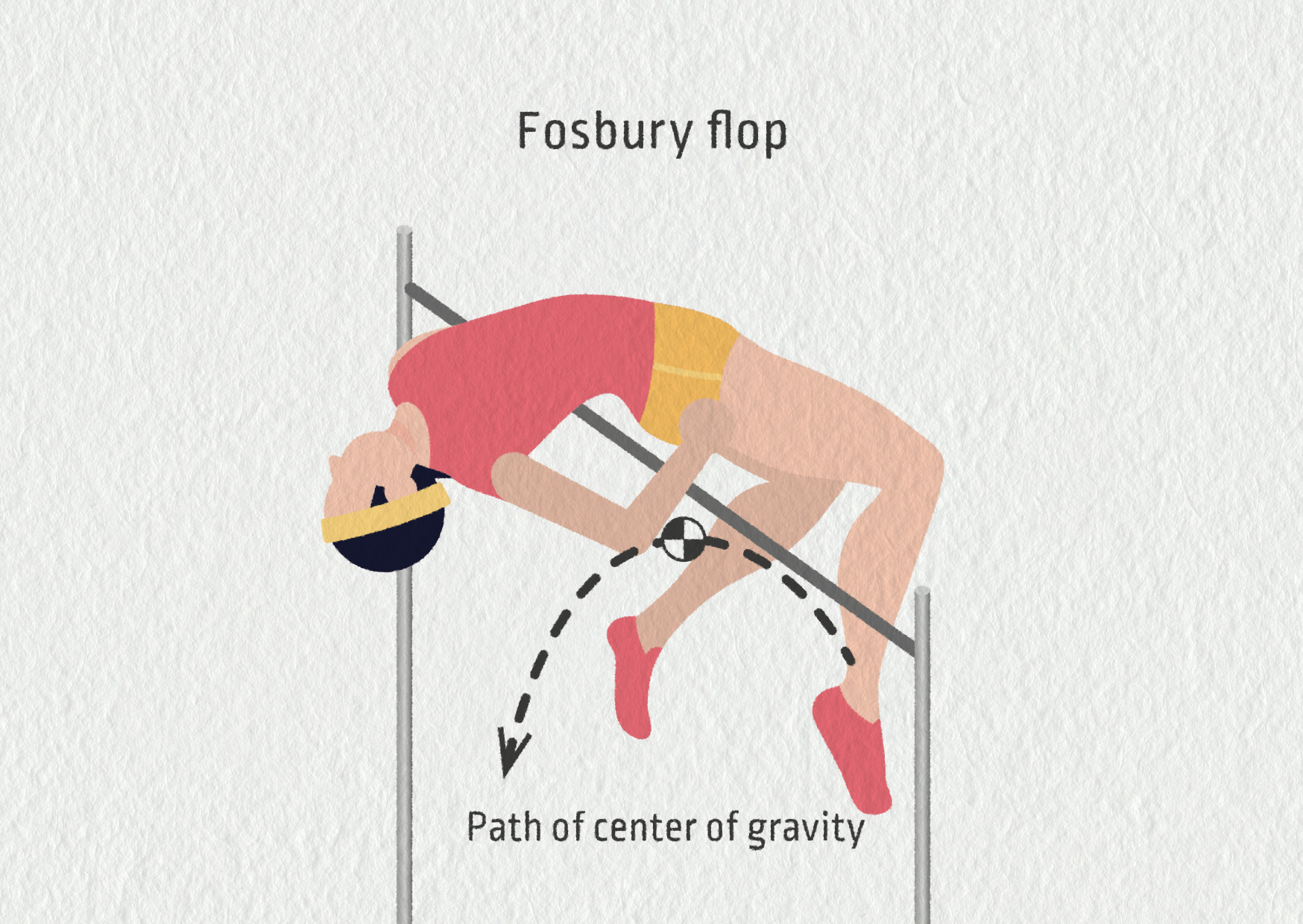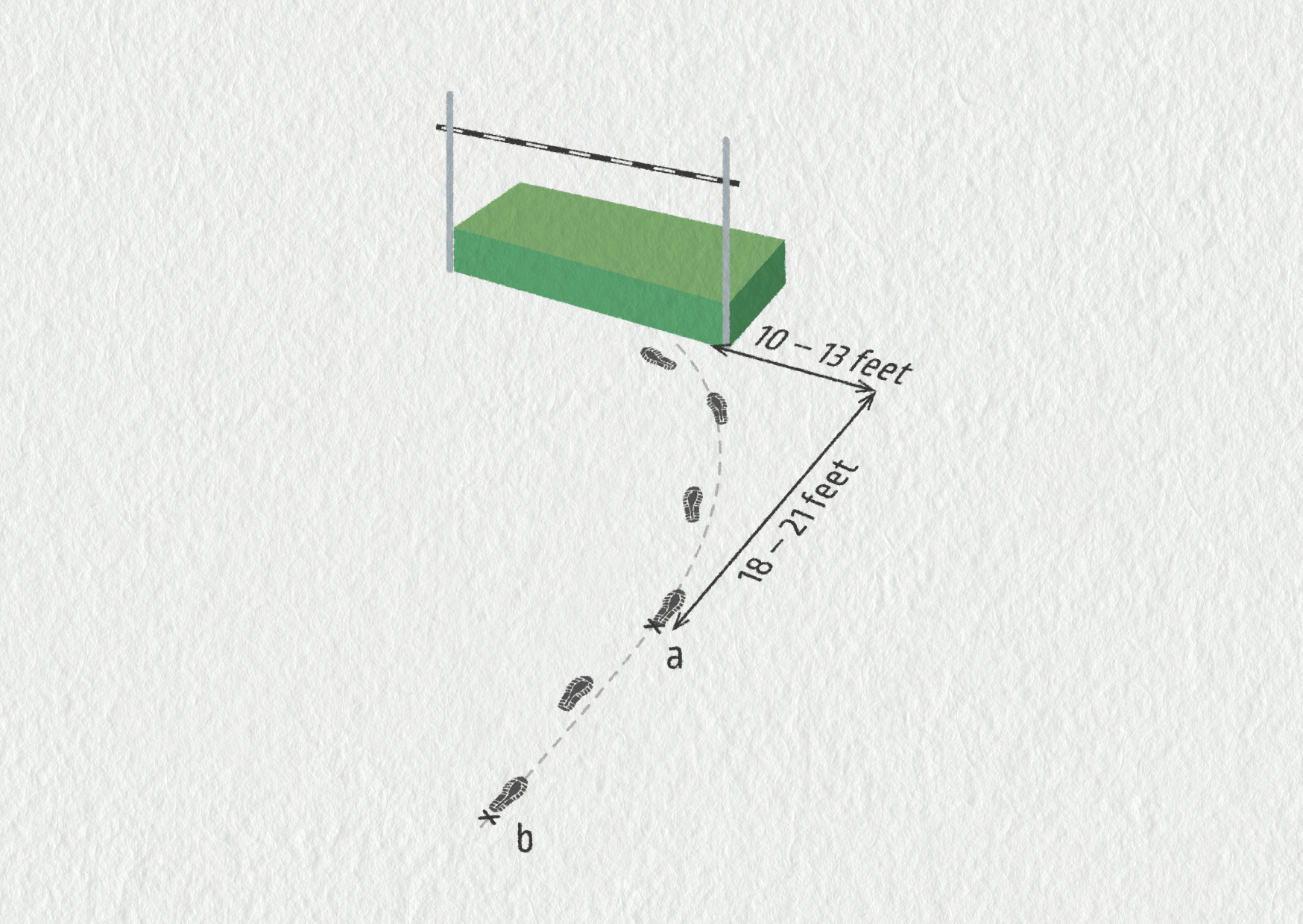Technika skoku do výšky
Revoluční inovace mohou přinést vytoužený úspěch nejen v průmyslu a výrobě, ale třeba i ve sportovním zápolení. Zářným příkladem takového úspěchu je Dick Fosbury a jeho zádová technika skoku vysokého, slavný Fosburyho flop. V době, kdy výškou 2,24 m vyhrál zlatou medaili, mu bylo pouhých 21 let a studoval stavební inženýrství na univerzitě v Oregonu. Přečtěte si následující článek a odpovězte na otázky.
- Ve kterém roce a při jaké příležitosti přišel Fosbury se svojí novou technikou skoku?
- Popište svými slovy, jakou polohu má tělo při překonání laťky technikou „nůžky“, „straddle“ a „flop“.
- Jakým způsobem se pohybuje těžiště atleta po odrazu při technice „flop“?
- Jakou maximální silou působí noha na podložku při odrazu?
- Proč je fyzikálně výhodnější rozběh po trajektorii tvaru J oproti rozběhu po přímce?
- Zjistěte, kdo je držitelem českého rekordu ve skoku do výšky a kolik tato výška činí.
The Physics of the Fosbury Flop
Harrison Williams, Stanford University, Fall 2018
Převzato z: Stanford University.
History of the High Jump
The high jump has continually evolved over the years as athletes have gained a better understanding of the physics of the event. While the technique athletes use to jump over the bar has changed very little since Dick Fosbury introduced his “Fosbury Flop” at the 1968 Summer Olympics, prior to his innovation many different techniques were used at the elite level. For example, at the 1936 Summer Olympics in Berlin, the scissors, Eastern cut-off, Western Roll, and a primitive version of the straddle were all used by one medalist or another. [1] The scissor technique involves the athlete jumping over the bar upright, while lifting both of his legs up over the bar in order to clear higher heights. In the Eastern-cutoff technique, the athlete moves his legs in the same manner as the scissor technique, however he also lowers his trunk to vertical in order to lift the pelvis higher. [1] The straddle technique marks a departure from both the scissor and Eastern cut-off in that during a jump with the straddle technique, the athlete cleared the bar face-down. At the peak of the jump, the athlete's legs and arms were below the bar, allowing the pelvis to rise higher, and the center of mass of the athlete to even pass under the bar. [1] However, once the Fosbury Flop was introduced it became by far the dominant technique, with every single men's world-record jump since 1980 utilizing the technique.

Zdroj
The Fosbury Flop
The genius of the Fosbury Flop is that it allows the athlete to bend his or her back around the bar at the peak, causing the athlete's body to clear the bar while his or her center of mass travels under the bar (see Fig. 16.5). This is similar to the effect a pole vaulters “pike” position has on his or her center of mass. [2] In order to effectively use the Fosbury Flop, the athlete must first build up sufficient speed to launch his or her center of mass into the air. To do this the athlete begins an approach a certain distance from the high jump bar, usually between 40 and 60 feet in front, and 10–14 feet to the side of the bar (see Fig. 16.6). The athlete first runs straight forward, building horizontal speed, then follows a curve towards the bar. The curve helps the athlete reach the proper take-off position, in which he or she is leaning slightly away from the bar facing the back-left corner of the landing area (if they are approaching from the same side as seen in Fig. 16.6). Once the athlete reaches the take-off point, he or she plants their foot and uses their slight lean away from the bar to convert their horizontal velocity into both vertical velocity and angular momentum. The vertical velocity helps raise the center of mass of the athlete, while the angular momentum helps rotate the athlete's body into the position seen in Fig. 16.5. Once the athlete clears the bar, he or she lands on their back on the landing mat.

Zdroj
Forces of the High Jump
The Fosbury Flop also allows the high jumper to begin the jump with their body at a slightly acute angle relative to the ground, which helps the athlete better translate their horizontal speed to vertical speed. The reaction forces endured by the athlete's take-off foot are quite astounding. In a study published in the Journal of Biomechanics, Erik Deporte used two Kistler force plates to measure the ground reaction forces of elite athletes at an indoor competition. He found the vertical impact forces to range between 6,100 N and 7,150 N, while the horizontal impact forces ranged from 4,100 N to 4,740 N.[3] 7,150 N converts to about 1,607 pounds and is felt by only the high jumper's take-off leg. To put that into perspective, the average female giraffe weighs approximately 1,825 pounds. [4]
References
[1] J. Dapena, “The Evolution Of High Jumping Technique: Biomechanical Analysis,“ in 24th International Symposium on Biomechanics in Sports (2002), ed. by K. E. Gianikellis, 1 Jul 02.
[2] H. Williams, “A Simplified Mechanical Model of the Pole Vault,“ Physics 240, Stanford University, Fall 2018.
[3] E. Deporte and B. Van Gheluwe, “Ground Reaction Forces in Elite High Jumping,“ J. Biomech. 22, 1002 (1989).
[4] J. D. Skinner and C. T. Chimimba, The Mammals of the Southern African Subregion, 3rd Ed. (Cambridge University Press, 2006).

